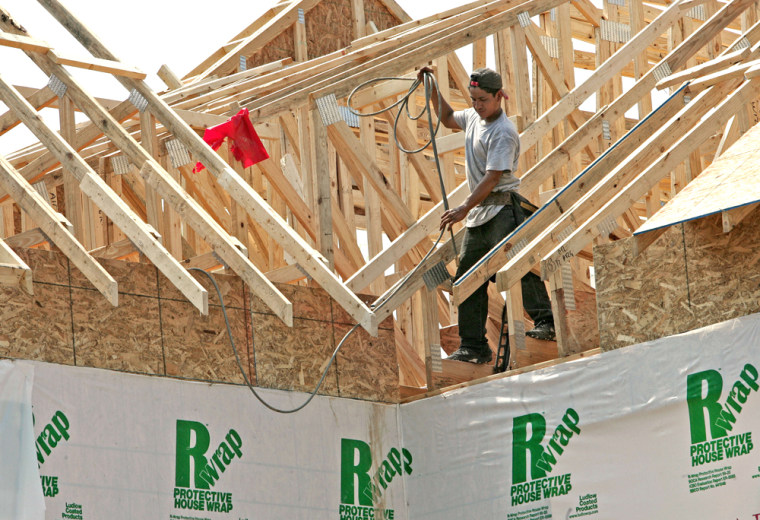The Commerce Department unveiled fresh data Friday suggesting the sizzling housing market is indeed cooling off.
Sales of new homes plunged in November by the largest amount in nearly 12 years, providing the most dramatic evidence yet that the red hot housing market over the last five years is losing steam.
New single-family homes were sold at a seasonally adjusted annual rate of 1.245 million units last month, a drop of 11.3 percent from October, when sales had surged to an all-time high.
“This is consistent with our view that the housing market is likely to continue to moderate in the coming months. But ... home sales are historically pretty strong,” said Patrick Fearon, senior economist at A. G. Edwards and Sons in St. Louis.
Last month’s decline was even bigger than the 8.7 percent drop-off that Wall Street analysts had been expecting. While sales of both new and existing homes are still on track to set records for a fifth straight year in 2005, analysts are forecasting sales will decline in 2006 as the housing boom quiets down.
Sales of existing homes dropped nearly 3 percent for the month of October, the National Association of Realtors reported late last month. That decline pushed the number of unsold homes to 2.87 million, the highest level in more than 19 years.
Sales of existing homes outpace those of new homes by a rate of nearly 6 to 1.
“The data must be considered confirmation of a clear slowing in the housing sector,” said Alan Ruskin, research director at 4CAST Ltd.
The housing market has had a charmed run in recent years, buoyed by a sustained period of low home mortgage rates.
During that time housing and related industries — from mortgage banking to hardwood floor sales — has been the engine for U.S. economic growth, consumer spending and job creation.
Now, rising interest rates are pinching many potential buyers by pushing monthly mortgage repayments higher. Affordability for first-time buyers has fallen to 20-year lows.
“The real estate market has been an underlying source of support for private consumption. As that market begins to slow and weaken, that would have an impact on private consumption,” said Brian Dolan, director of FX Research at Gain Capital in New Jersey.
Analysts are looking for home sales to dip by around 6 percent next year under the impact of rising mortgage rates. Analysts believe that house prices, which had been soaring at double digit rates, will moderate as well.
Some of that price moderation was evidenced in the November new-home sales report, which showed that the median price of a new home sold was $225,200 last month. That was up just 0.3 percent from November 2004, the weakest year-over-year price change in two years. The November median price was down 4.1 percent from the October median sales price of $234,800.
Some economists are worried that housing prices in some areas have been driven higher by a speculative frenzy that could see prices plunging as sales slow in the hottest markets. That scenario would evoke memories of the sharp declines that occurred when the stock market bubble burst in early 2000.
But other economists contend that housing is unlikely to exhibit the same collapse that the stock market did although they believe that the declines in sales expected next year will act as a drag on the overall economy.
By area of the country, sales were actually up by 13.4 percent in the Northeast, the biggest percentage increase in this region since January 1994.
However, sales fell in all other areas, led by a 22.1 percent drop in the West, the biggest decline in this region since February 1995. Sales were down 18.3 percent in the Midwest and fell 5.5 percent in the South.
